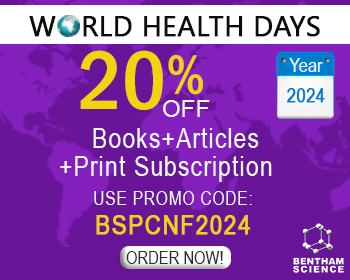Abstract
Background: P-glycoprotein (Pgp) is well known for its clinical importance in the pharmacokinetics of drugs and its role in multidrug resistance. The promiscuity of Pgp that arises from its ability to extrude a wide range of lipophilic and structurally unrelated compounds from cells, render the classification and understanding of its interacting compounds a great challenge.
Method: In this study, a data set of Pgp-interacting compounds including 1463 inhibitors, 1085 noninhibitors, 308 substrates and 126 non-substrates was retrieved and subjected to a combination of analyses, including exploration of chemical space, statistical analysis of descriptor values and molecular fragment analysis, to obtain insight into distinct physicochemical properties and important chemical substructures which may govern the biological activity of investigated compounds toward Pgp. Statistical analysis of descriptor values and molecular fragment analysis indicated that particular size, shape, functional groups and molecular fragments may govern the classification of Pgp-interacting compounds by influencing their physicochemical properties and their interaction with Pgp. Overall, the interacting compounds (i.e., substrates and inhibitors) are larger in size, more flexible, more lipophilic, and less charged than non-interacting compounds (i.e., non-substrates and non-inhibitors). Conclusion: The fragment analysis suggested that methyl and amino groups may be involved in Pgp inhibition and/or transport. The 2-methoxyphenol fragment was noted to be a potential substructure for designing Pgp inhibitors, whereas the 2-sulfanylidene-1-[3,4,5-trihydroxy-6-(hydroxymethyl)oxan-2- yl]-1,2-dihydropyridine-3-carbonitrile substructure was implied for avoiding transport by Pgp. Hence, this study could provide a comprehensive understanding of this drug transporter, which could benefit an early ADMET screening as well as drug design and development.Keywords: ADMET, chemical space, molecular substructure analysis, P-glycoprotein, physicochemical properties, promiscuity.



























